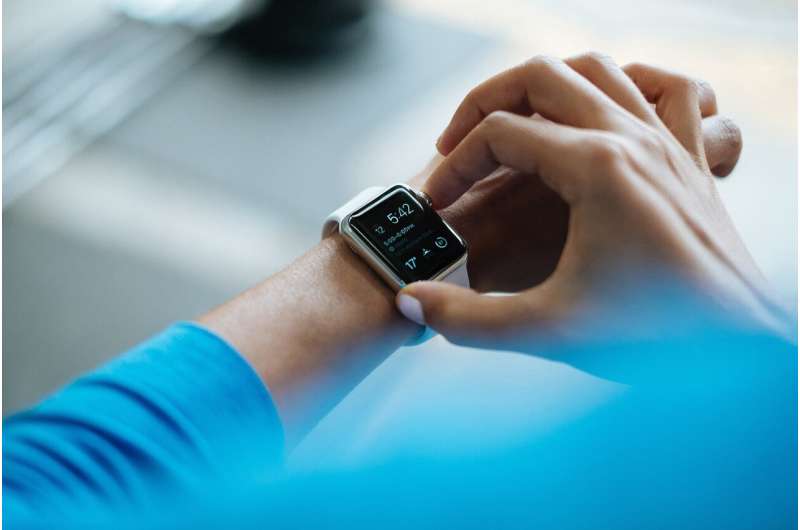
Wearable devices have come a long way from counting steps or heartbeats, with new tech offering the ability to track blood oxygenation, glucose levels and blood pressure, though its reliability remains a matter of debate.
Some of the most cutting-edge products were on display this week at the Consumer Electronics Show (CES) in Las Vegas.
Almost 10 years since the debut of Apple Watch, the global market for “trackers”—watches, bracelets, and other bands—is valued around $60 billion, according to several firms, and is expected to exceed $100 billion by the end of the 2020s.
“Before smartwatches, no one was thinking about heart rate monitoring,” said Anna Barnacka, CEO and president of health tech startup MindMics.
“Today, everyone is quite aware about how important it is.”
MindMics says it uses headphones and wave-based technology to offer a complete analysis of cardiac activity—including the condition and function of heart valves.
“You can look at your heart with the precision of a medical device,” Barnacka said.
In clinical trials, Barnacka said the device was able to capture a murmur in a patient with aortic stenosis, which is the narrowing of a heart valve.
Currently, diagnosing aortic stenosis requires multiple tests, including inserting a probe into an artery.
Another wearable product at CES is Stelo, by California-based startup DexCom, the first non-prescription wearable patch capable of continuously measuring blood sugar levels.
Such patches have typically been reserved for diabetics, but Stelo will be available even “if you have prediabetes, or if you’re just interested in understanding how different food impacts your body,” said DexCom chief operating officer Jake Leach.
The US Centers for Disease Control and Prevention (CDC) estimate 100 million Americans have prediabetes—elevated blood sugar levels that are below the threshold for diabetes.
“The vast majority of them don’t know they have prediabetes because they haven’t had the testing,” Leach said.
Unstandardized regulations
Other latest-generation devices can detect sleep apnea, take blood pressure readings or report cardiac arrhythmia.
Still, part of the medical and scientific community is skeptical about the data collected by these wearables.
“I’m sure some of these products are beneficial, so I don’t want to sound like I’m doubting all of them, but the approval process is honestly pathetic,” said Diana Zuckerman, president of the National Center for Health Research (NCHR).
This was a reference to the validation protocol of the US Food and Drug Administration (FDA), which has authority on the subject.
Connected devices “are not tested as rigorously” as drugs, she said.
“The only way I could tell whether the quality of the data are improving is if it were being made publicly available in a way that somebody like me could evaluate,” which is not generally the case, said Zuckerman.
Some, such as DexCom and MindMics, have nevertheless been the subject of independent studies by doctors and researchers, who have recognized their effectiveness for certain parameters.
Tammy Brady, a professor at Johns Hopkins University who specializes in hypertension in children, is cautious about the results produced by bracelets, watches and other connected rings.
“Ideally, it would be great to have blood pressure information for a growing number of people,” she said, “but for the time being, they’re too approximate to use reliably.”
As a member of a committee on blood pressure monitors, Tammy Brady works with the International Organization for Standardization, the originator of the famous ISO standards.
“We hope that once ISO standards for cuffless blood pressure are set,” she said, “it will help manufacturers and the FDA to rigorously test their reliability.”
© 2025 AFP
Citation:
Beyond step counting: Wearable tech promises medical-grade data (2025, January 9)
retrieved 9 January 2025
from
This document is subject to copyright. Apart from any fair dealing for the purpose of private study or research, no
part may be reproduced without the written permission. The content is provided for information purposes only.













Leave a comment